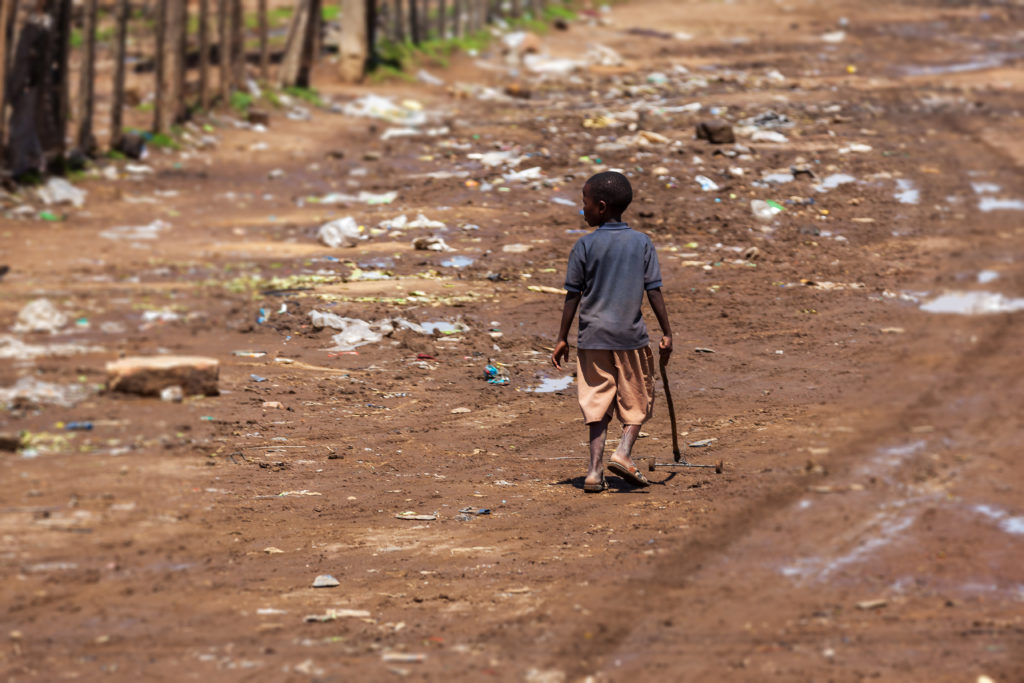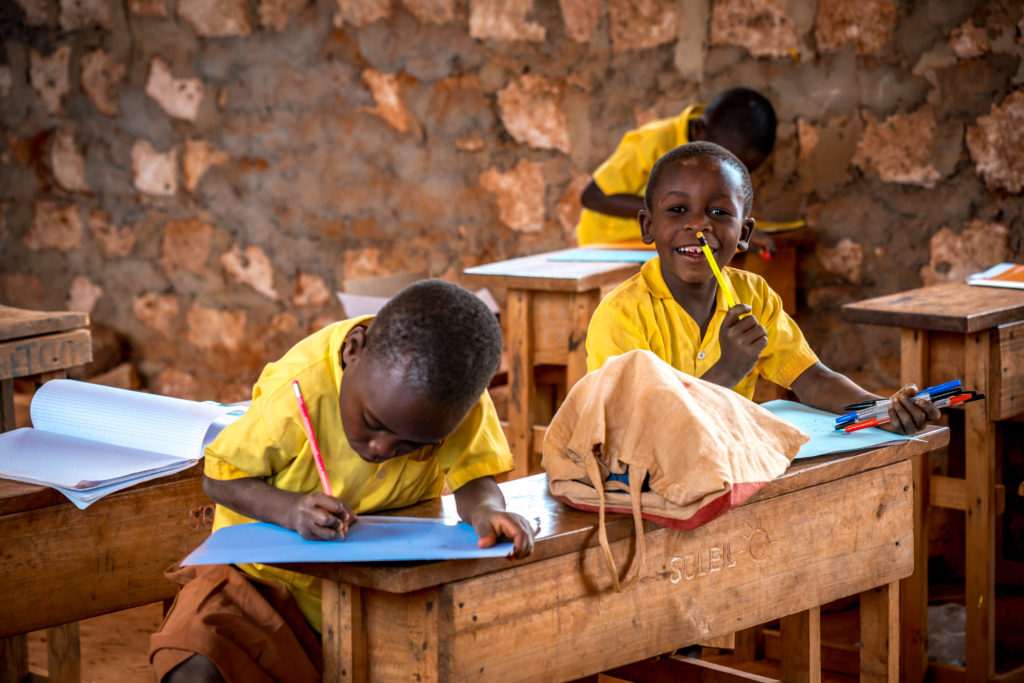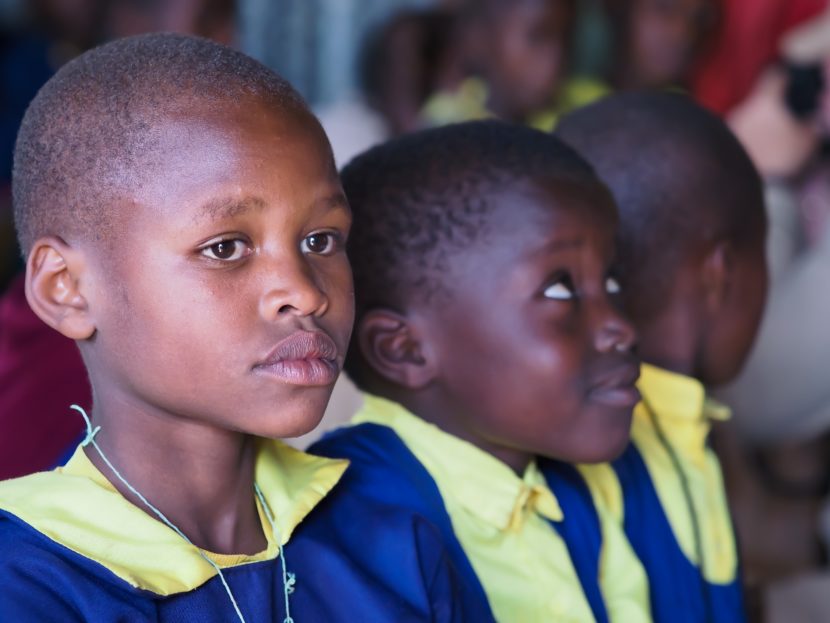Kenya, along with all other African jurisdictions, has committed to guaranteeing 12 years of primary and secondary education for all children in line with the African Union’s (AU) Continental Education Strategy (Human Rights Watch, 2024). Despite this, and visible domestic policy efforts to ensure and provide ‘free’ education, hidden costs continue to prevent large numbers of children from accessing education. If not addressed, these expenses threaten to undermine the legitimacy of the country’s educational framework, and risk alienating the most vulnerable children from future opportunities.
Kenya’s education policies and international commitments
Africa possesses the highest regional proportion of out-of-school children; nearly 100 million children of primary and secondary school age were outside of permanent education in 2021 (Human Rights Watch, 2024). Against this backdrop, the 2024 Day of the African Child identified “Education for All Children in Africa” as its central theme (Human Rights Watch, 2024).
Kenya’s legislative and policy framework provides a series of guarantees and privileges for all children seeking to access education. At an international level, Kenya is a signatory to the United Nations Convention on the Rights of the Child (UNCRC) and the African Charter on the Rights and Welfare of the Child (ACWRC), from which it derives fundamental human rights for children. Kenya is also committed to working towards Sustainable Development Goal (SDG) 4, which encourages countries to ensure access to inclusive, equitable and quality education for all.
Kenya’s 2010 Constitution, Children’s Act (2001) and National Children Policy (2010) make up the core domestic legal framework. These are supplemented by legislative policies on basic education, teachers’ services, special needs in education, alternative provisions and nomadic education (National Council for Children’s Services, 2015).
Article 53 of Kenya’s Constitution guarantees basic education – a phrase often synonymous with primary education – for every child. This is reflected in the Education Act, which provides for the holistic maintenance of educational systems, resources and governance structures to ensure the provision of free education (Sustainable Development Goals Knowledge Platform, 2020).
Implementation and impact of free education policies in Kenya
Collectively, these policies support the government’s attempt to ensure free education for all and, crucially, deliver a 100% transition rate from primary to secondary level education (Sustainable Development Goals Knowledge Platform, 2020). This forms part of Kenya’s flagship Vision 2030 Strategy, a development framework presenting the country’s roadmap for development and prosperity. Kenya’s efforts to provide free basic education are evident in the implementation of the policy.
Since the 1970s the country has subsidised education at all levels, evolving to a full cost-sharing education policy in 1986 (Areba, 2011). In 2003, Kenya introduced free primary education, leading to an immediate increase in enrolment to 84% (UKAID, 2024). This was followed by the introduction of free secondary education in 2007 (Areba, 2015).
Robust policy combined with consistent effort has continued to yield observable fruit in recent years. As of 2022, roughly 93% of the country’s children were enrolled in primary school education (UNICEF, 2022). This reflects an identified upward trend in net primary school enrolment throughout the 2010s (Sustainable Development Goals Knowledge Platform, 2020).
Children have also been completing primary education at an impressive rate: over 85% of children completed primary education in 2019 (Sustainable Development Goals Knowledge Platform, 2020). Between 2018 and 2020, the percentage of students transitioning from primary to secondary school also increased from 83% to 95% (Kibaara, 2021).
The myth of accessibility
Though encouraging, these positive statistics overshadow a significant portion of children who remain unable to access primary or secondary education. A research from 2022 indicates secondary school enrolment nationwide sits at just over 50% (UNICEF, 2022). More broadly, 2.5 million children aged 4-17 have never been to school (UNICEF, 2022). The inconsistency between Kenya’s improving primary to secondary school transition rate and persisting large numbers of children failing to access education can be attributed, at least in part, to hidden costs.
Although the Kenyan government remains the chief financial provider of free primary and secondary education, economic challenges and faults in the education infrastructure have enabled schools to find ways to push costs onto children and their families (Areba, 2011). Overarchingly, the government maintains primary responsibility for school staff salaries and infrastructural maintenance, however, this leaves wiggle room for an array of crucial, essential costs, including (Areba, 2011):
- Enrolment fees, including interviews and registration costs.
- School materials costs, including textbooks and exercise books, stationery, and uniforms.
- Activity costs, to support extra-curricular activities, excursions and subject-related activities.
- Additional tuition costs, where necessary beyond the basic provision of tuition services.
- Examination fees, including at key junctures enabling advancement from primary to secondary school.
- Practical costs, including transport to and from school and baggage.
- Lodging and subsistence, including meals for day students, bedding for boarding students.
- Health care costs in the event of illness or injury.
This non-exhaustive list evidences the inherent complexity of ‘free’ education. While basic elements of educational provision may be free, the comprehensive range of indirect costs presented to families risks alienating vast swathes of the population from education. These problems are exacerbated by secondary education which, owing to a greater range of subjects and school activities, is more expensive. School fees make up less than 50% of households’ secondary education spending in most African countries (Gruijters, 2023).
Marginalised groups
The hidden costs keeping many children out of school disproportionately affect numerous communities in Kenya including:

- Impoverished families who are inherently less able to afford indirect costs. This is particularly evident when national disasters or crises enhance economic vulnerabilities. Following COVID-19-enforced closure, Kenyan schools reopened in 2021 to an environment where 16% of girls and 8% of boys across the country did not attend school (Kibaara, 2021). This has been linked to increased pressure on children to provide financial support to their families, either by raising income themselves or reducing costs by avoiding school.
- Young women and girls who face additional cultural and practical barriers to school completion (Kibaara, 2021). These include pressures to take on domestic roles in the home, child marriage and the need for sanitary supplies through adolescence (UKAID, 2024). This confluence of factors can disincentivise parents and carers to invest in girls’ education.
- Children living in rural or nomadic communities who have a harder time facilitating the physical journey to schools or inhabit areas with significant cultural differences from Kenya’s major cities (UNICEF 2022). Girls in some of Kenya’s arid border counties that neighbour Somalia make up less than 30% of secondary exam participants (UKAID, 2024).
Policy interventions
Combatting hidden costs requires a multi-sectoral response. In many African states, a scarcity of resources combined with large and young populations may mean government education spending undermines investment into other basic, pressing national needs (Gruijters, 2023). As such, Kenya must:
- Continue to cultivate public-private sector partnerships to help fund basic education and eradicate poverty in vulnerable communities (Kibaara, 2021).
- Make efforts to subsidise essential school costs including transport, uniforms, educational materials and school food.
- Work with civil society to co-deliver aid projects to enhance educational attendance and completion. For example, World University Service Canada (WUSC) supported children in Kakuma and Dadaab Refugee Camps to access education by providing cash transfers (McBride). This enabled families to identify and invest in their priority educational needs, such as sanitation and food for young girls.
- Ensure robust re-entry pathways are created to ensure children aren’t alienated from educational systems if their school attendance is interrupted for long periods.
- Continue to invest in digital literacy and online educational programmes to increase access to educational services and circumvent indirect costs. If children are able to facilitate some remote learning or access technological equipment, this can save them long-term costs. The Government of Kenya’s Digital Literacy Project has included the provision of one million digital learning tablets to over 20,000 schools in the last 6 years (Sustainable Development Goals Knowledge Platform, 2020).

At Humanium, we seek to raise awareness of the importance of children’s rights to education, health and sanitation. Join us in making children’s rights a safe environment and accessible education a reality by sponsoring a child, making a donation or becoming a volunteer.
Written by Vanessa Cezarita Cordeiro
References:
Areba, G.N. (2011, November). “The hidden costs of free primary education and their implication on enrolment in Kisii central district, Kenya.” Retrieved from Kenyatta University Library, accessed 18 June 2024.
Areba, G.N. (October, 2015). “Effects of hidden costs in free secondary education on transition and completion rates in public boarding schools in Kisii Country, Kenya.” Retrieved from Kabarak University Library, accessed 18 June 2024.
Gruijters, R. (2023, May 31). “Free secondary education in African countries is on the rise – but is it the best policy? What the evidence says?” Retrieved from The Conversation, accessed 18 June 2024.
Human Rights Watch. (2024, June 15). “Africa: accelerate free education for all.” Retrieved from Human Rights Watch, accessed 17 June 2024.
Kibaara, J.M. (2021, October 3). “Kenya’s education goals face the challenges of affordability, traditions and COVID-19.” Retrieved from The Conversation, accessed 18 June 2024.
Mararo, M. (n,d). “Silent suffering: Kenyan girls missing out of education.” Retrieved from Equal Measures 2030, accessed 17 June 2024.
McBride, S. (n,d). “The Kenya equity in education project: cash transfers for education in prolonged refugee contexts.” Retrieved from Global Compact on Refugees, accessed on 17 June 2024.
National Council for Children’s Services. (2015). “National Plan of Action for Children in Kenya.” Retrieved from Better Care Network, accessed 17 June 2024.
Republic of Kenya. (2020, June). “Second voluntary national review on the implementation of the sustainable development goals.” Retrieved from Sustainable Development Goals Knowledge Platform, accessed 17 June 2024.
UKAID. (n,d). “Country profile: Kenya.” Retrieved from UKAID Girls’ Education Challenge, accessed 17 June 2024.
UNICEF Kenya. (2022, November). “Situation of children 2022.” Retrieved from UNICEF Kenya, accessed 20 June 2024.


